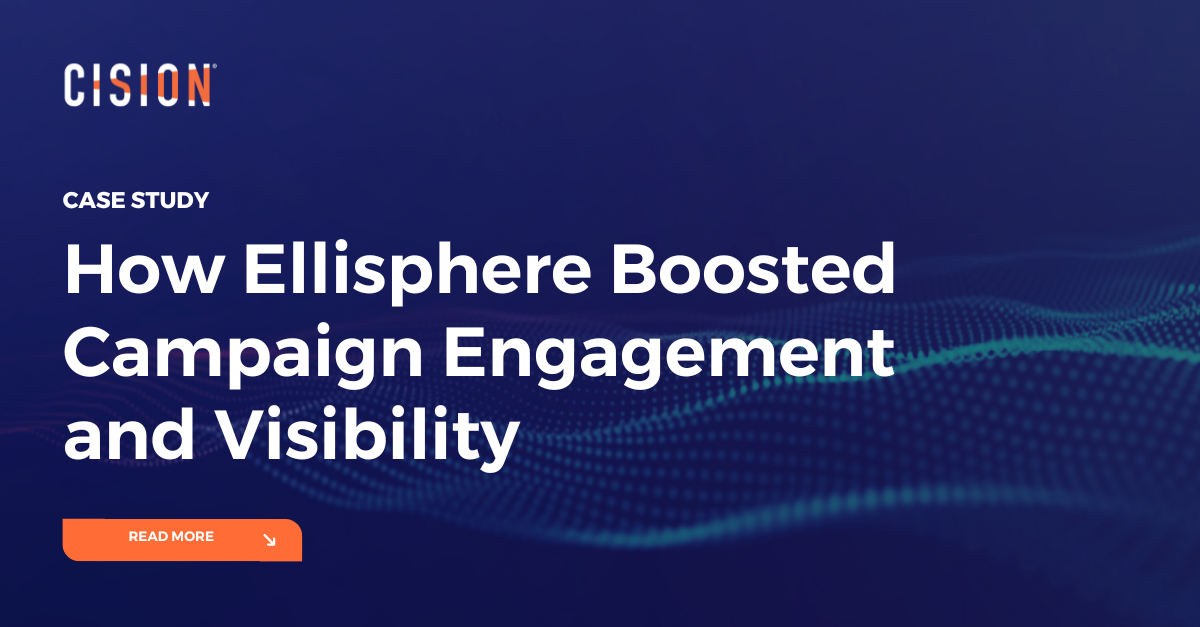
Travel Mad Mum
For Cision’s latest white paper on influencer marketing, Influencer Champions asked Em Sheldon, Scarlett London and Travel Mad Mum for their views on the sector.
YouTube has seen an influencer marketing backlash following the argument between James Charles and Tati Westbrook. Do you think broadcasting backlash such as this has a negative effect on followers and brands looking to work with influencers? If so, how?

Em Sheldon: I guess people have always had arguments, it just hasn’t always been so public. I think it’s hard because you have a responsibility to keep a good image online but also you want to show reality, so I personally don’t think this will have had a negative effect. If anything, it just means both of their reach will be bigger which is kind of crazy when you think about it!
Travel Mad Mum: I think there are a variety of different types of influencers. That’s why I had to look up who these people are. Some are more showbiz, reality TV type stars, whilst others are completely different. I really don’t think influencers can be all put into the same context.
My content and style is so miles apart from James and Tati I don’t see it affecting people like me. We all know the influencer marketing arena is booming at the moment and I don’t see it slowing down anytime soon.
Is there a reason why you think some brands might still be holding back from investing into influencer marketing?
Em Sheldon: I still think some brands don’t understand the return, which is why I think it’s important to show screenshots of tracked sales from other campaigns as an example. Some brands focus on the follower or ‘like’ numbers when there’s so much more to social media than just a number of likes. Because, actually, that person may have an audience who really buy and trust in what they say.

Scarlett London: It’s amazing that more and more brands are becoming aware of the impact of influencer marketing and its benefits, such as being able to monitor and track where traffic has come from (which isn’t always directly possible with traditional marketing).
Brands are now able to follow consumer journeys more accurately through influencer marketing and benefit from having their key messages amplified from a unique perspective. So, it’s potentially more engaging and exciting than a standard advert.
However, I think because the influencer world is still so new, it’s a bit of a minefield and that’s why some brands may be holding back from investing.
There are SO many agencies, influencer talent management companies, influencers, YouTubers, Instagrammers, bloggers etc. that it is difficult to know where to start and how to ‘get your foot in the door’ working with them.
Similarly, effective influencer campaigns take strategy and time, so some companies might not have the manpower to dedicate to researching how they can make it work as effectively as possible for them. The industry is still very new, which means that regulation and industry ‘set standards’ are still yet to be identified and implemented but I think once this happens, it may help with any current confusion.
Travel Mad Mum: More and more are coming on board and I feel it’s those that have strong ties with journalists that may be holding back because they still believe traditional media is the only way. Like everyone, marketing teams have to go through the stages of change to shift their practices. I regularly hear them speak at conferences and they openly say it is about coming around to the change in ways and means of advertising.
Are there any changes that you think need to be made to influencer marketing activities in order to make the experience a more positive and successful one for both brands and influencers?
Em Sheldon: I think the word ‘collaborative’ needs to actually mean ‘collaborative’. I get emails every day asking to collaborate but it’s so often one sided. I think if we work together, the content is a lot better too and appeals to the influencers’ audience. After all, we know what works.
Scarlett London: I think having a clear brief from the brand is very helpful, but also giving the influencer the opportunity to come up with a concept for the campaign too. That way it is less prescriptive and more of a mutual creative collaboration! Saying that, most brands are doing this already and are amazing at it!
Travel Mad Mum: My biggest gripe is with affiliate marketing. My website has many affiliate links to things I’ve genuinely experienced, tried and enjoyed myself. It could be a hotel, activity or tour for example. I also have links to travel products I regularly use.
The idea is that any purchases made through these links, I am supposed to get a small commission at no extra cost to the customer. I feel there needs to be some sort of official monitoring of this as many brands are not following what they’ve signed up to, concealing data and using software that is not fit for purpose. This results in lost earnings for me and it’s often not taken seriously by the brand.
For the most part it works, but there are a handful that don’t keep their side of the deal.
With the above in mind, what does the future of influencer marketing look like? Do you think its popularity will continue to increase, or will we see a noticeable decline in coming years?
Em Sheldon: I think it will continue to rise. But I would like to see the people who have bought followers and likes (which of course may put brands off, this is why social blade is such a good tool for checking) no longer getting campaigns as they can ruin it for the rest of us.
Scarlett London: I think it will only increase, especially as the younger generations continue to engage with social media more than traditional forms of media (or so it’s being said).
However, as with anything, social media and its uses will need to be closely looked at in order to develop and evolve in the right way. Social media is never going to be used perfectly, but we need to look at best practice methods in order to ensure the safety of its users.
The CMA and ASA guidelines were recently implemented, however, I think they fail to deliver transparency in the right way. Rather than labelling everything as an ‘ad’, I think influencers should be encouraged to be transparent about disclosing the relationship with each brand.
So they should be encouraged not just to whack ‘ad’ on everything, but to disclose whether it’s a ‘paid partnership’ or a ‘gifted piece’ or a ‘press trip’. And they should also have to tag the specific brand, because ‘ad’ could mean any one of the above with any brand potentially featured within the image.
I also think there needs to be a support and wellbeing service for social media users – especially in an age where things go ‘viral’ and people don’t quite consider the emotional effects that having unwanted unwarranted negative attention from thousands of internet users can generate.
For me personally, having an image of mine taken out of context and spread across the internet for everyone to chime in on a debate, dissecting my character without having any knowledge of who I am, was absolutely hideous for me mentally. There was no-one I could turn to for support, advice and help – and I feel this needs to be a necessity with an influx of so called ‘cancel culture’ (like the James Charles instance for example).
Travel Mad Mum: I think it will continue to rise and something else will come along down the line in a decade or so.
To learn more about what the future holds for the influencer marketing sector, download our latest white paper – Is influencer marketing a busted flush? – by filling in the form below:
About Guest Contributor
We welcome opinion content and other article submissions from the earned media community. If you are interested in submitting a piece for the Cision website, please email prnews@cision.com.
Learn More. Do More. demo new
PR Tips, Case Studies, and Product Updates

[On-Demand Webinar] The Next Generation of Media Intelligence: From Gorkana to CisionOne
Explore CisionOne, a revolutionary media intelligence platform, and the evolution of Gorkana. Learn key features and strategies from Luke Williams, CisionOne Product Marketing Manager. Elevate your media outreach to new heights!


